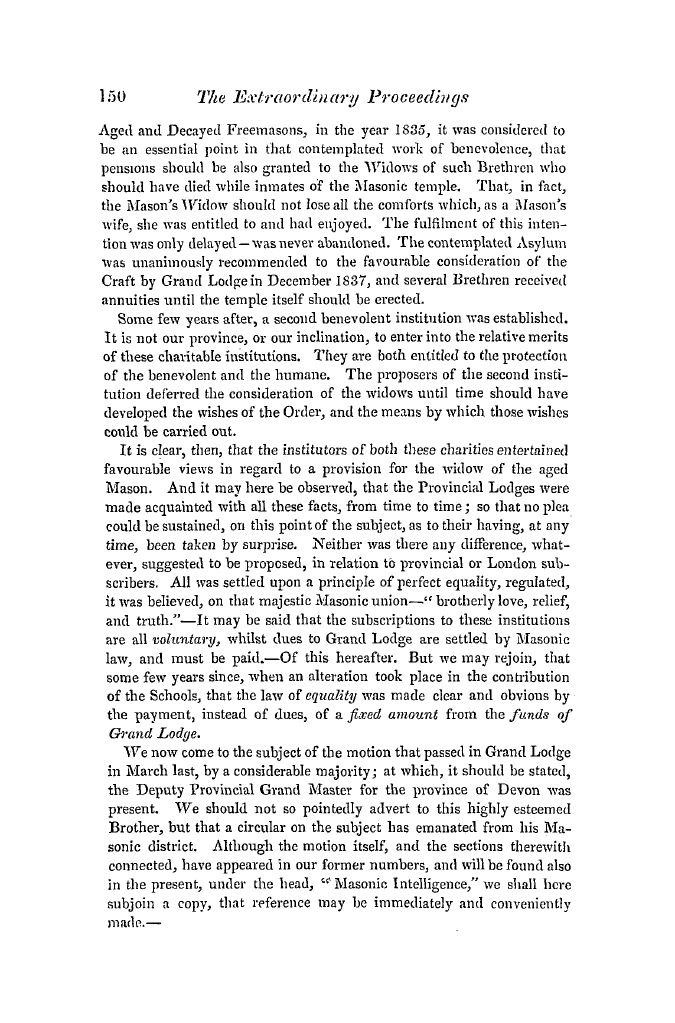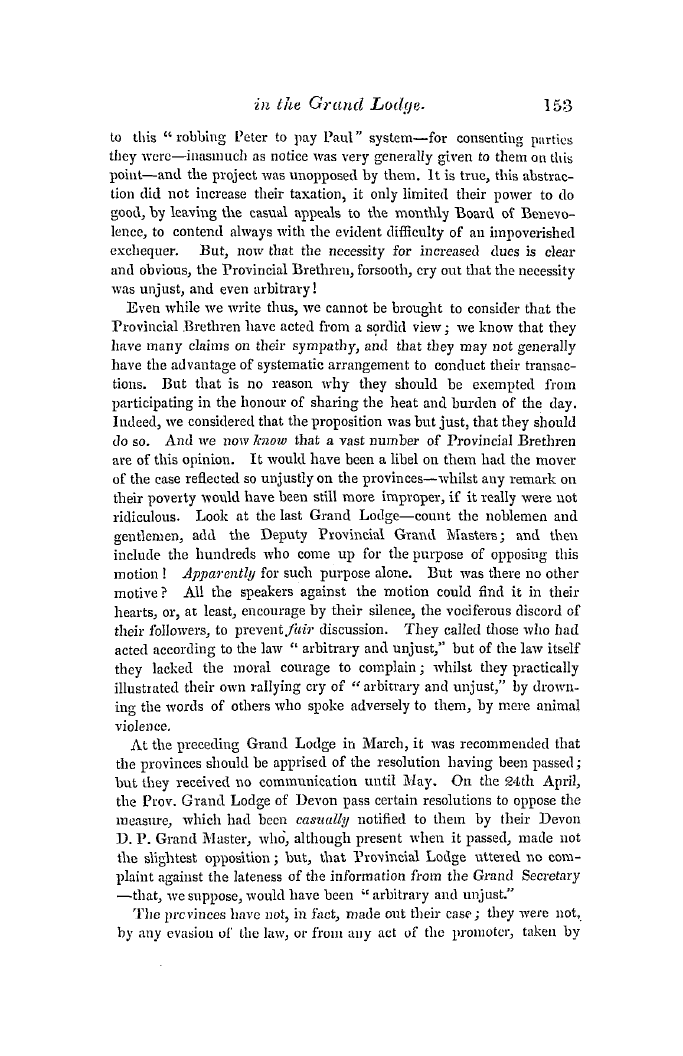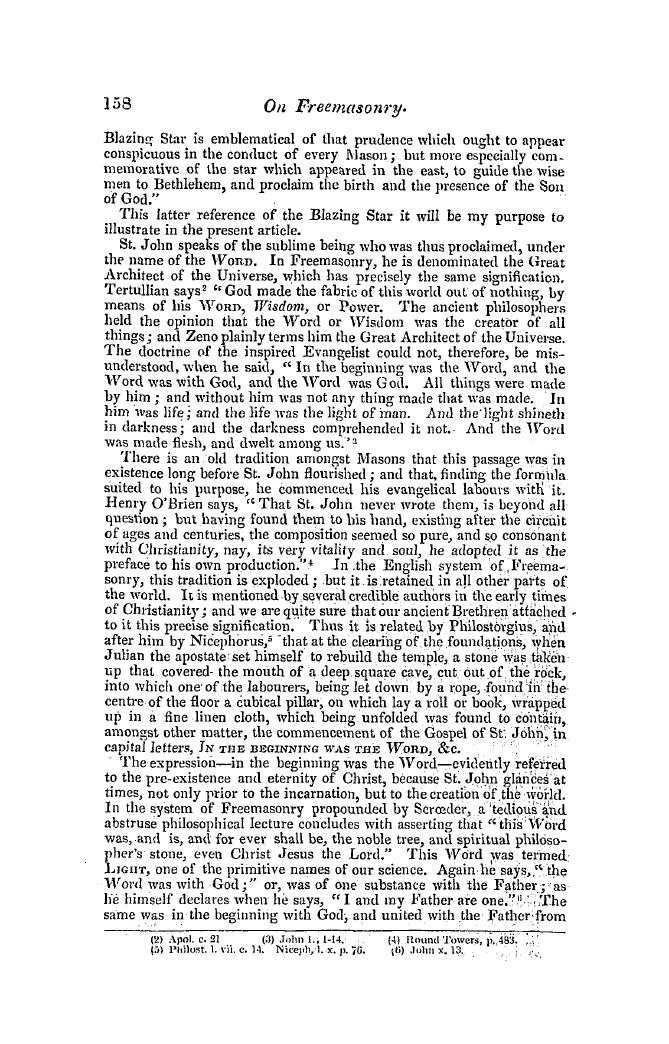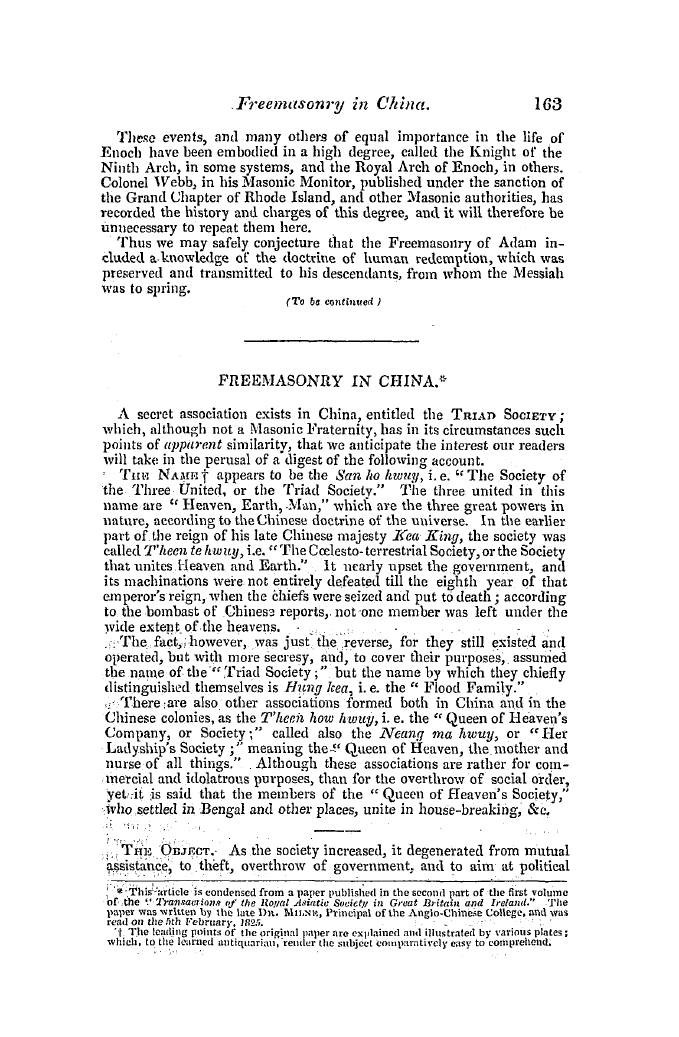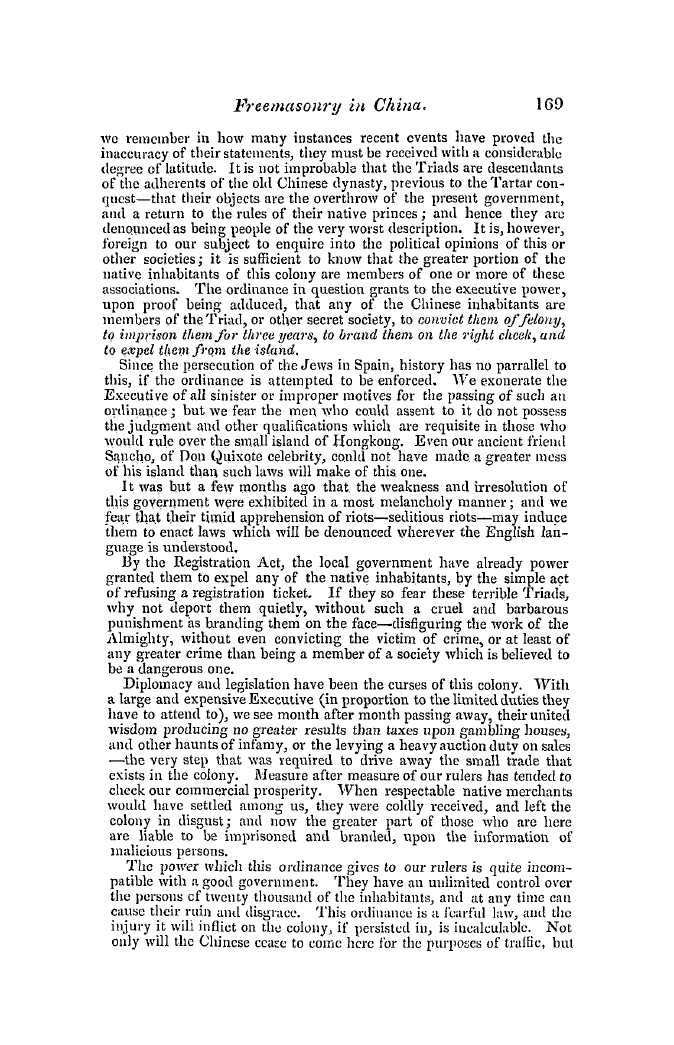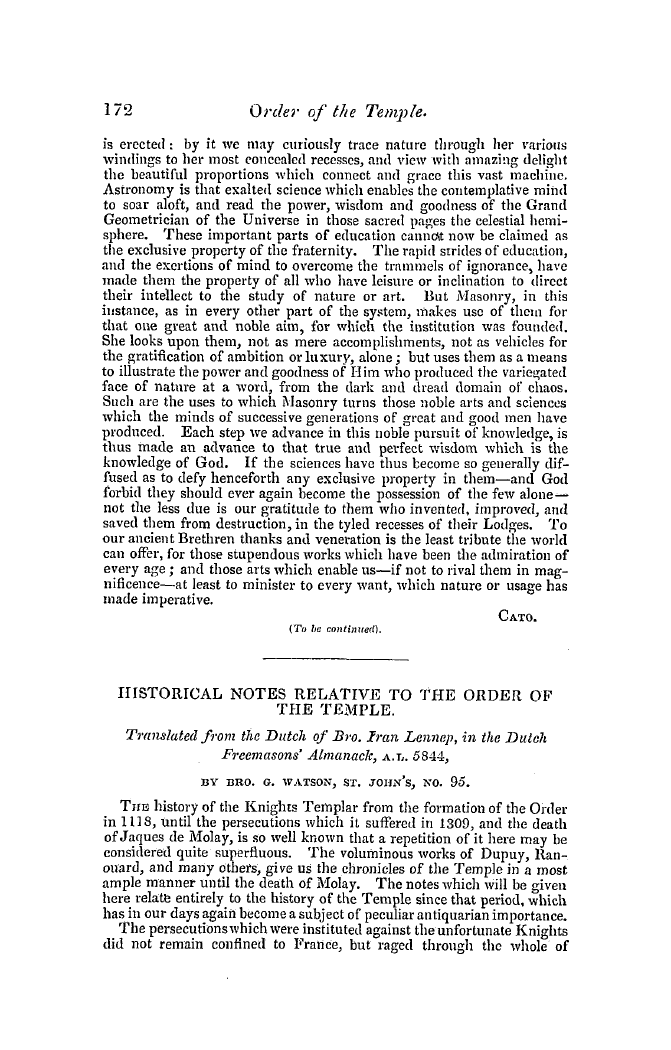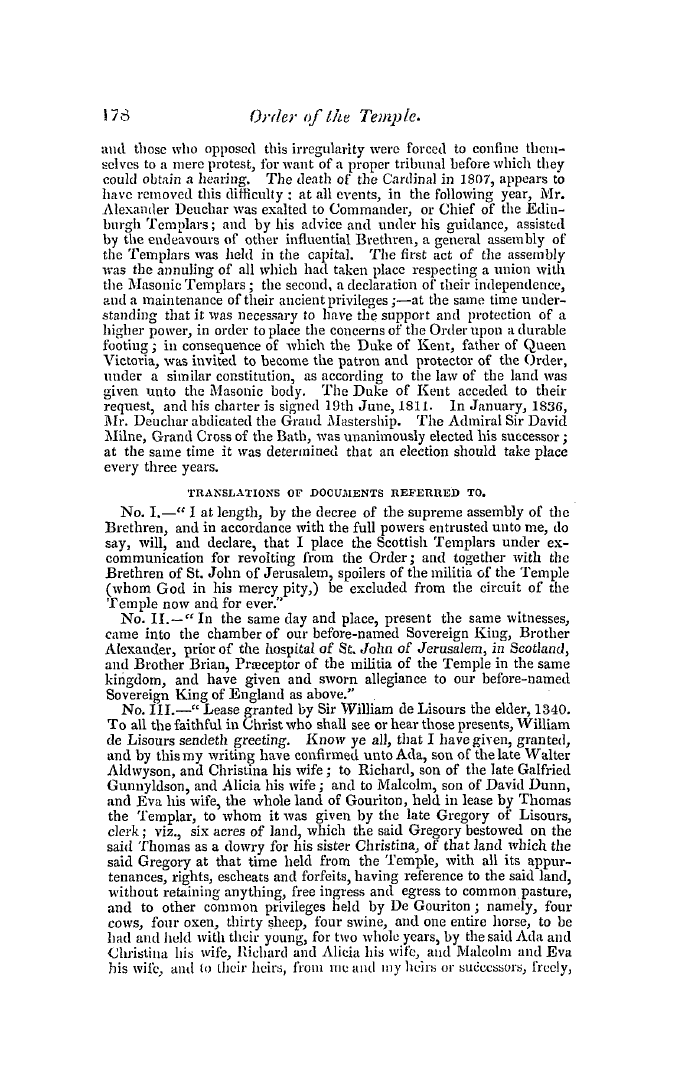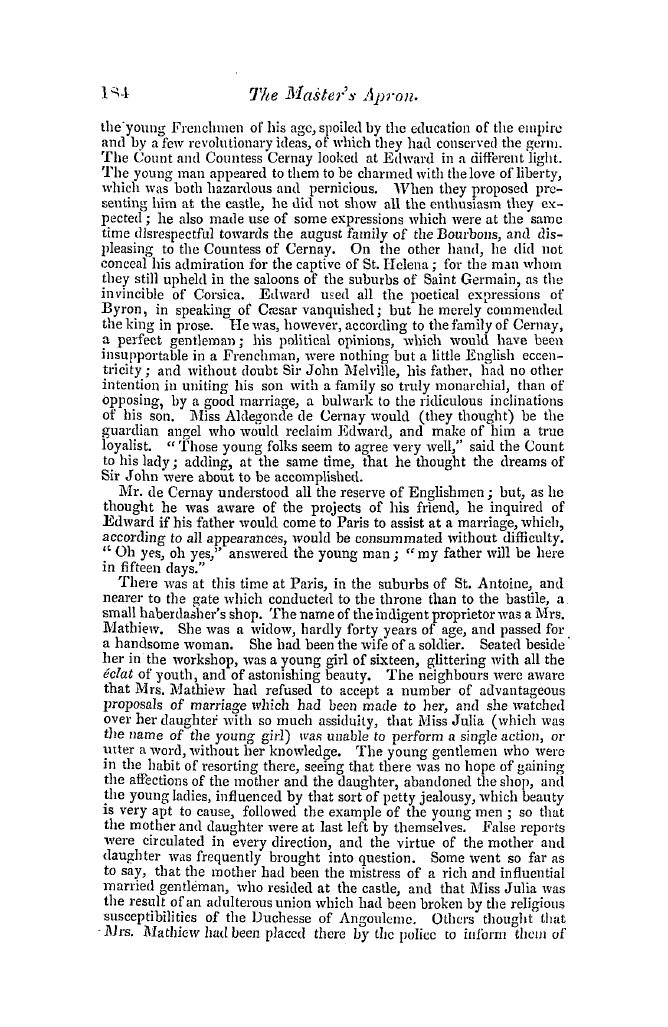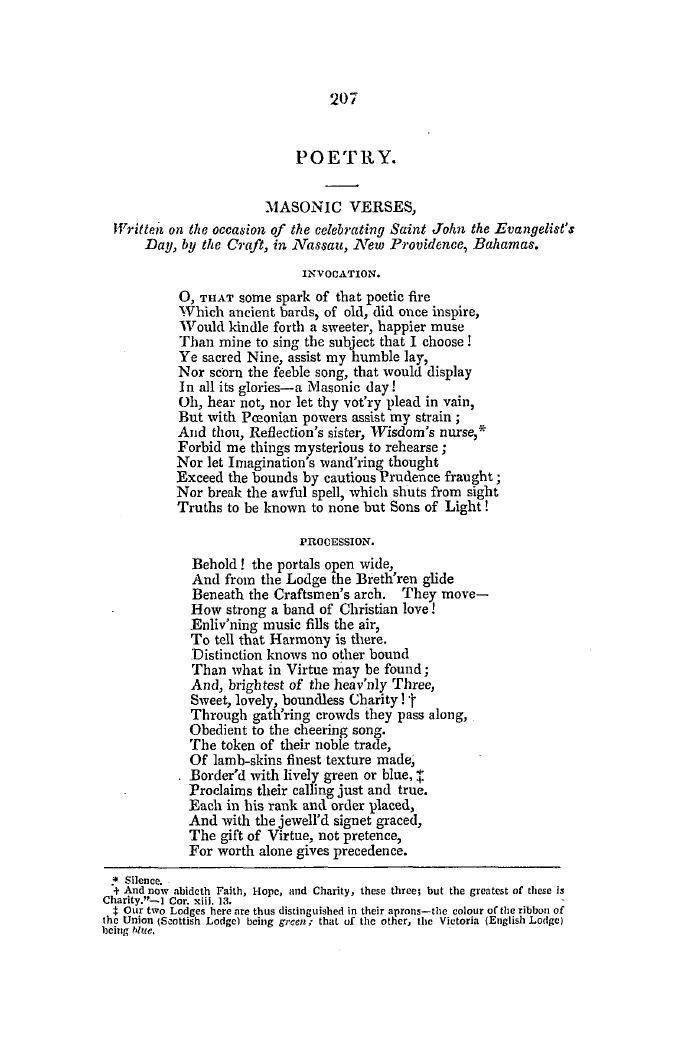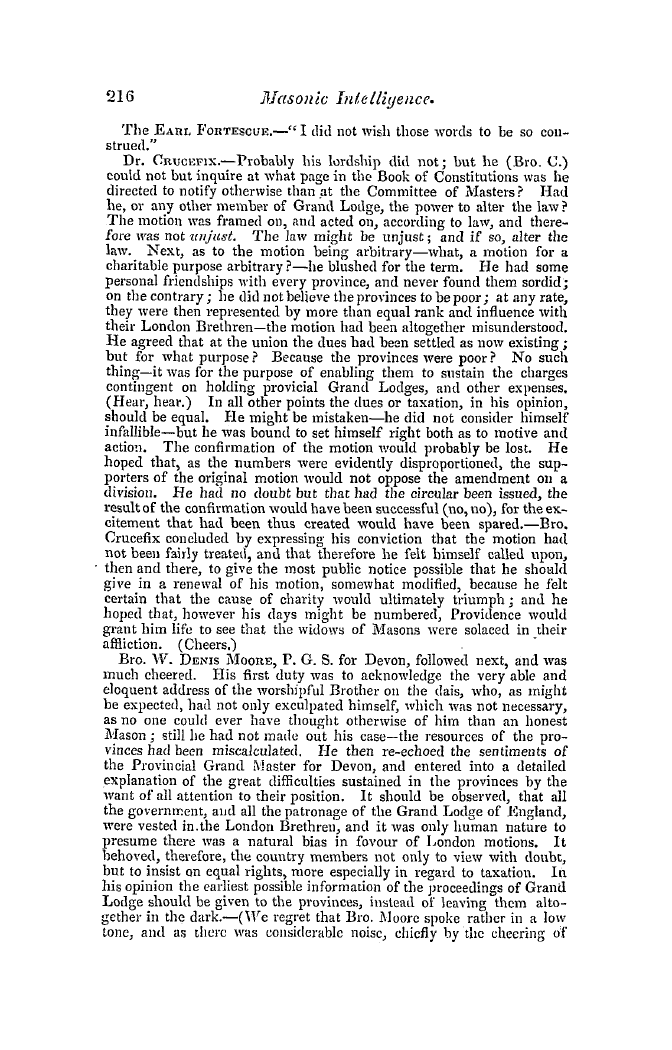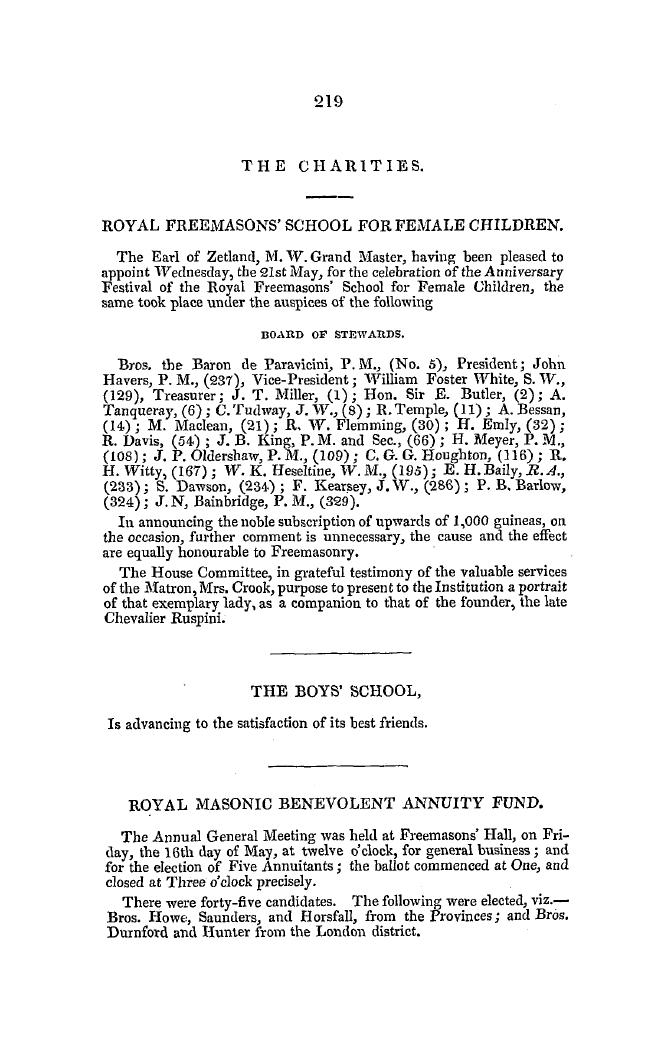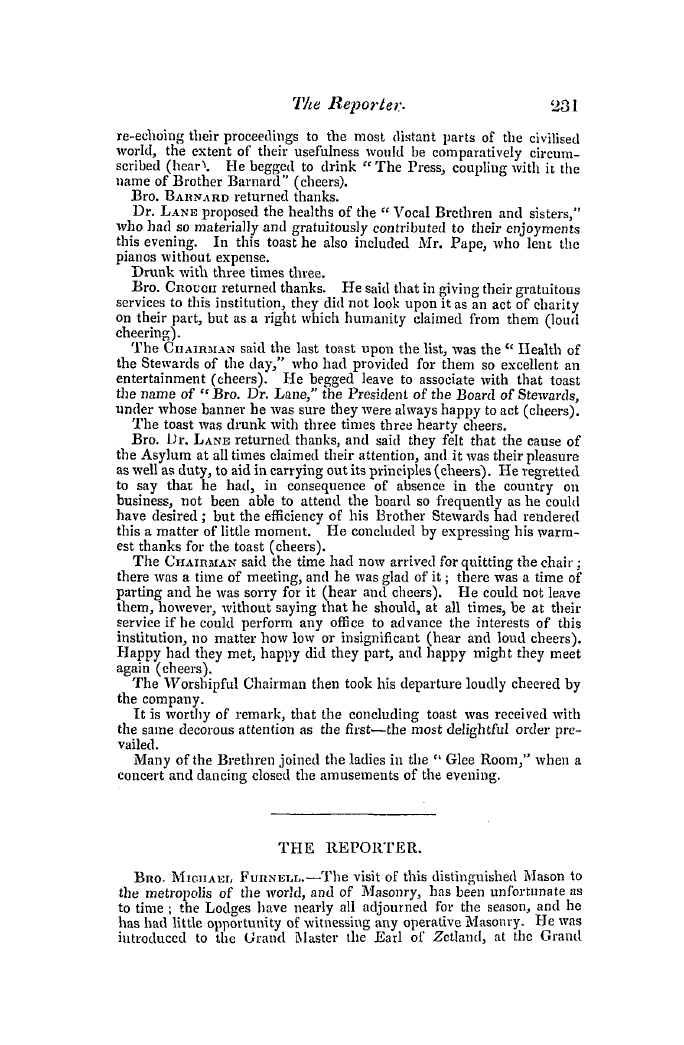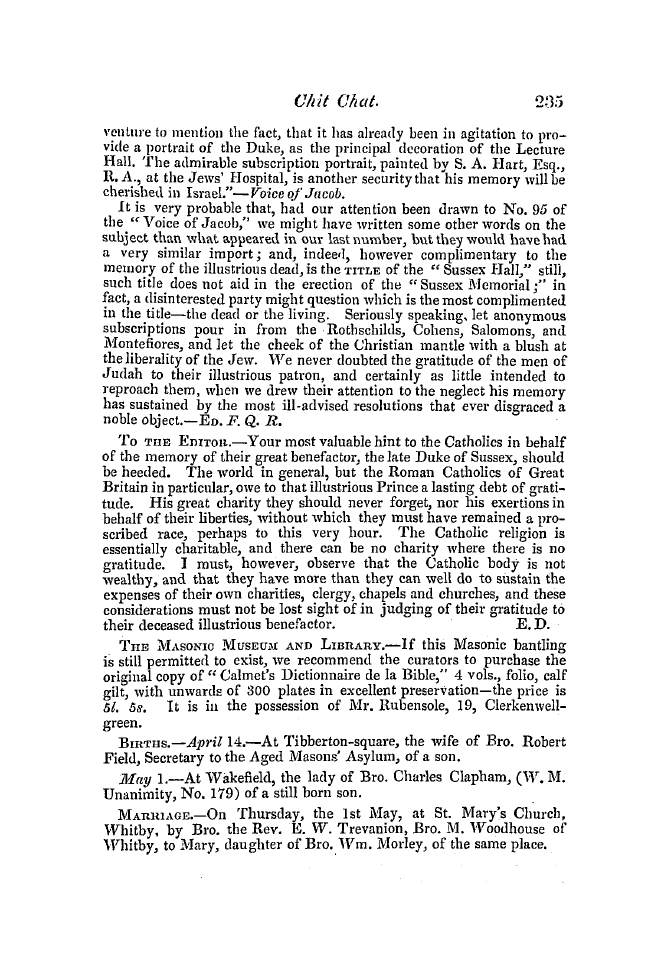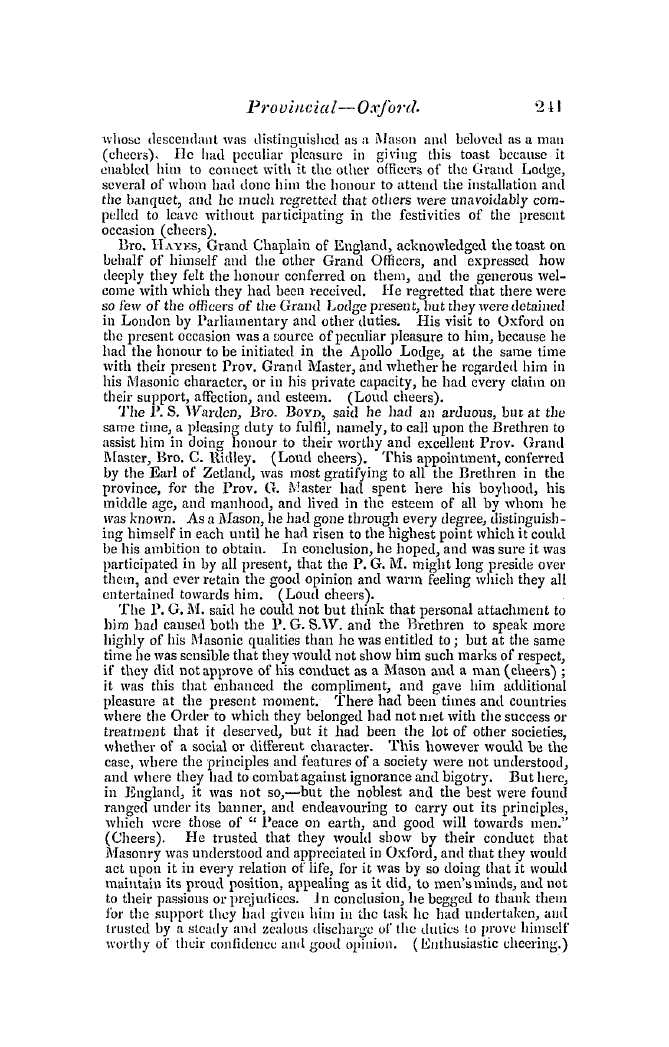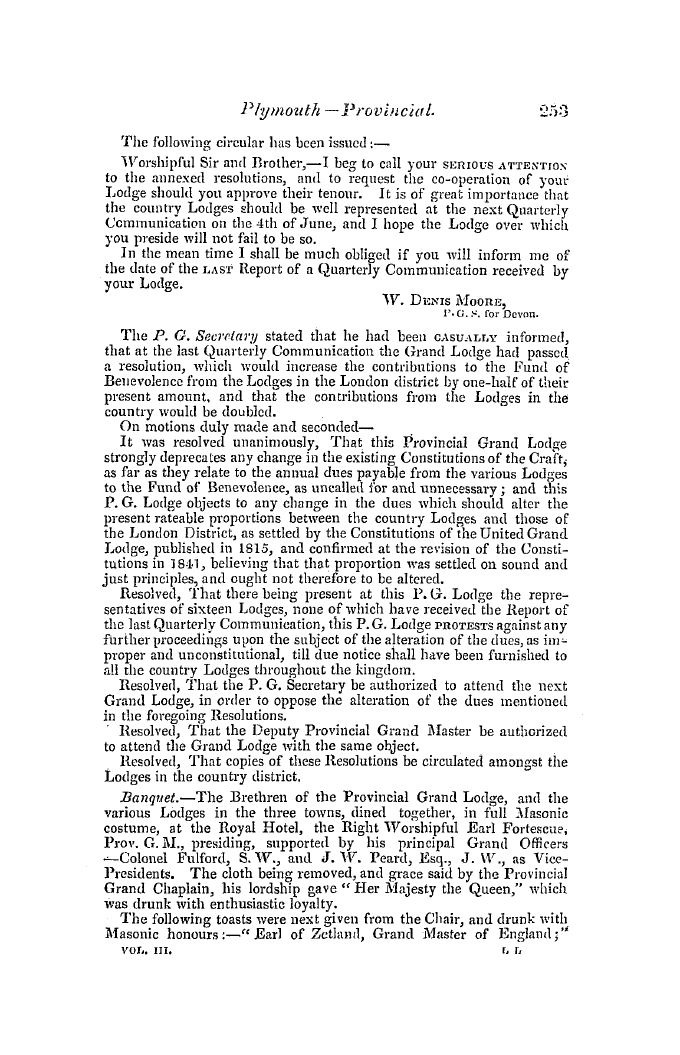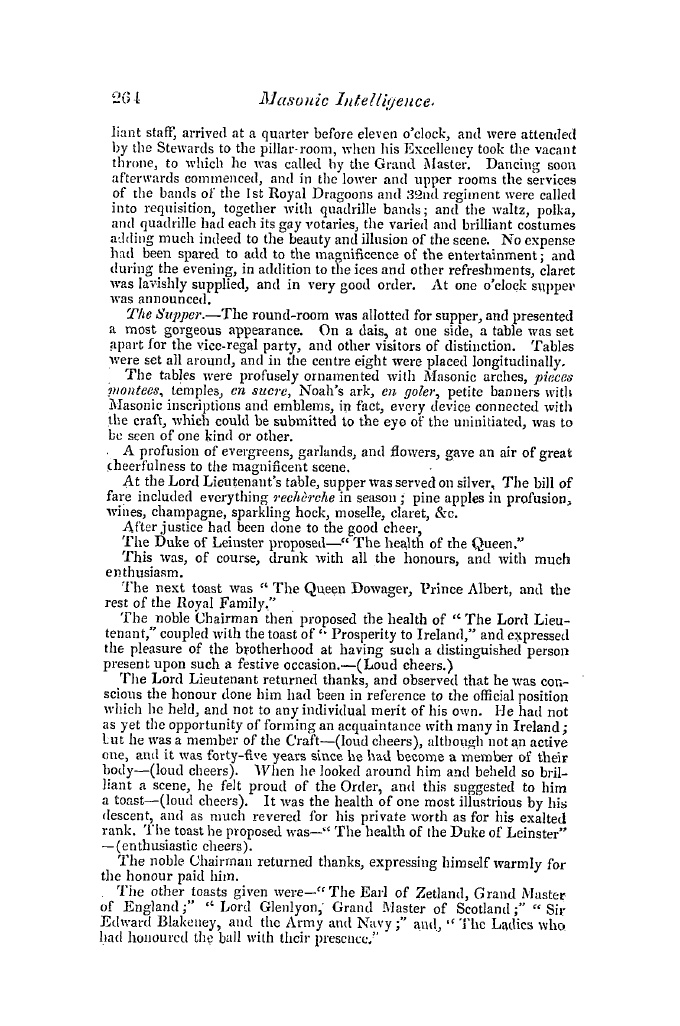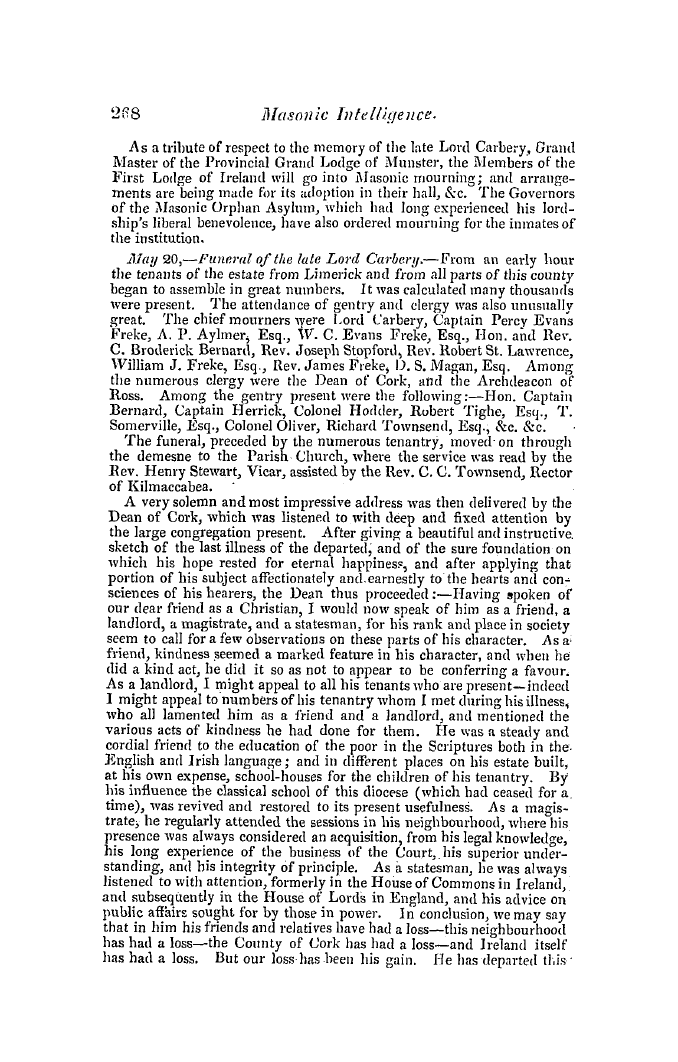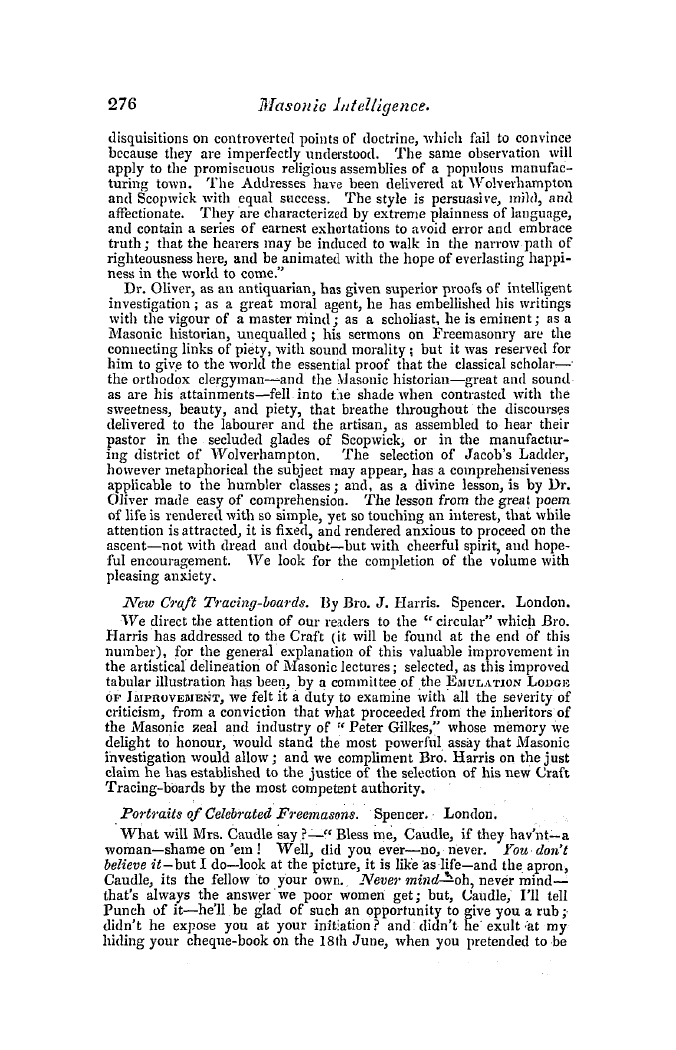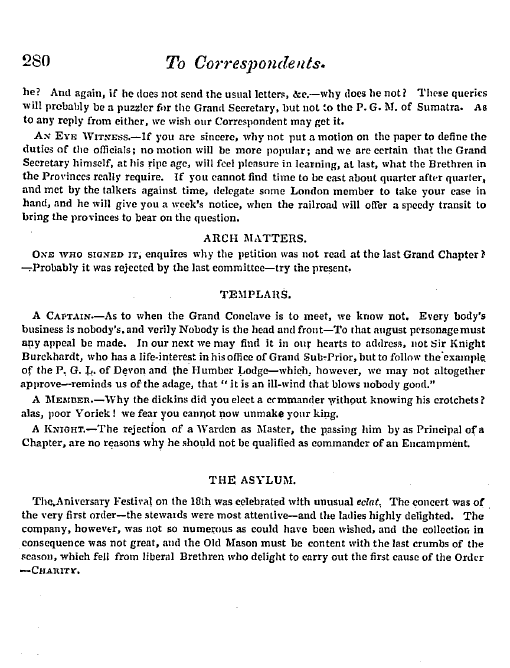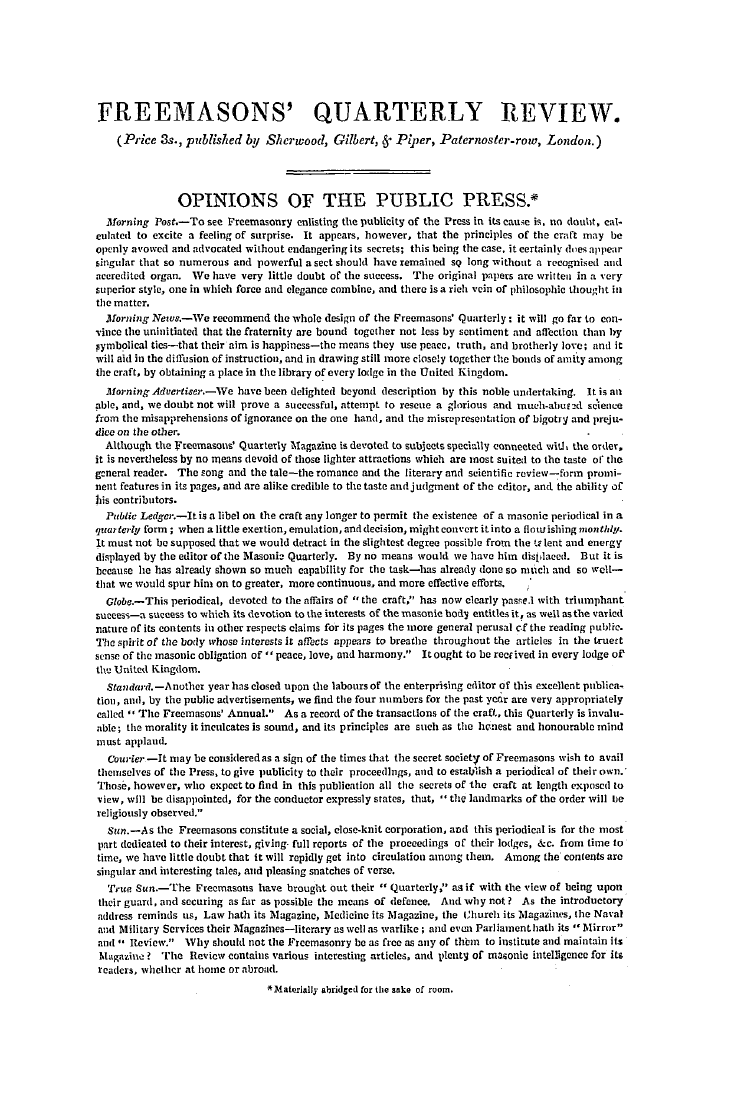Note: This text has been automatically extracted via Optical Character Recognition (OCR) software.
An Inquiry Into The History Of The Pomegranate As A Masonic Emblem.
AN INQUIRY INTO THE HISTORY OF THE POMEGRANATE AS A MASONIC EMBLEM .
BY ALBERT G . MACKEY , ai . D . Fast Master of S domon ' s Lod-je , Nc , 1 , Charleston , South Carolina * IT is somewhat surprising , that although the indefatigable Oliver has devoted one of his most abstruse works to the consideration of the " Signs and Symbols" of our Order , he has not in the whole of that treatise made the slihtest allusion to the Pomegranateone of the most
g , remarkable of our emblems . To fill up this hiatus in Masonic science , is the object of the present paper . And I doubt not that to every Fellow-Craft Mason it will be interesting to discover that the pomegranate , as anemblem , was known to ancl highly esteemed by the nations of antiquity , and that there is thus established another link in the great chain which connects the Ethnical Mysteries , or as they have very appropriately been called , "Spurious Freemasonry , " ancl the Order as it now
exists among us , ancl as it doubtless was established at the building of King Solomon ' s temple . In the description of the pil ' ars which stood at the porch of the temple ( see 1 Kings vii , 15 , ) it is said that the artificer " made two ¦ chapiters of molten brass to set upon the tops cf the pillars . " Now the Hebrew word D'HIHSJD ( caphtorim ) which has been translated " chapiters" and for which in Amos ix . 1 the word " lintel" has been
, , incorrectly substituted ( though the marginal reading corrects the error , ) signifies an artificial large pomegranate , ov globe , f It was customary to place such ornaments upon the tops or heads of columns , and in other situations . The skirt of Aaron ' s robe was ordered to be decorated with golden bells and pomegranates , and "they were among the ornaments fixed upon the golden candelabra . There seems therefore to have been attached to this fruit some mystic signification , to which it is indebted
for the veneration thus paid to it . If so , this mystic meaning should be traced into spurious P ' reemasonry ; for there , after all , if there be any antiquity in our Order , we shall find the parallel of all its rites and ceremonies .
1 . The Syrians at Damascus worshipped an idol wliich they called Rimmon . This was the same idol that was worshipped by Naman before his conversion , as recorded in the second book of Kings . The learned have not been able to agree as to the nature of this idol , whether he was a representation of Helios , or the Sun , the God of the Phoenicians , or of Venus ; or according to Grotius , in his commentary on the passage in Kings , of Saturn , or what according to Statius seems more probable , of Jupiter Cassius . But it is sufficient for our present purpose to know that Rimmon X \ F \ " \ is the Hebrew and Syriac for pomegranate .
Note: This text has been automatically extracted via Optical Character Recognition (OCR) software.
An Inquiry Into The History Of The Pomegranate As A Masonic Emblem.
AN INQUIRY INTO THE HISTORY OF THE POMEGRANATE AS A MASONIC EMBLEM .
BY ALBERT G . MACKEY , ai . D . Fast Master of S domon ' s Lod-je , Nc , 1 , Charleston , South Carolina * IT is somewhat surprising , that although the indefatigable Oliver has devoted one of his most abstruse works to the consideration of the " Signs and Symbols" of our Order , he has not in the whole of that treatise made the slihtest allusion to the Pomegranateone of the most
g , remarkable of our emblems . To fill up this hiatus in Masonic science , is the object of the present paper . And I doubt not that to every Fellow-Craft Mason it will be interesting to discover that the pomegranate , as anemblem , was known to ancl highly esteemed by the nations of antiquity , and that there is thus established another link in the great chain which connects the Ethnical Mysteries , or as they have very appropriately been called , "Spurious Freemasonry , " ancl the Order as it now
exists among us , ancl as it doubtless was established at the building of King Solomon ' s temple . In the description of the pil ' ars which stood at the porch of the temple ( see 1 Kings vii , 15 , ) it is said that the artificer " made two ¦ chapiters of molten brass to set upon the tops cf the pillars . " Now the Hebrew word D'HIHSJD ( caphtorim ) which has been translated " chapiters" and for which in Amos ix . 1 the word " lintel" has been
, , incorrectly substituted ( though the marginal reading corrects the error , ) signifies an artificial large pomegranate , ov globe , f It was customary to place such ornaments upon the tops or heads of columns , and in other situations . The skirt of Aaron ' s robe was ordered to be decorated with golden bells and pomegranates , and "they were among the ornaments fixed upon the golden candelabra . There seems therefore to have been attached to this fruit some mystic signification , to which it is indebted
for the veneration thus paid to it . If so , this mystic meaning should be traced into spurious P ' reemasonry ; for there , after all , if there be any antiquity in our Order , we shall find the parallel of all its rites and ceremonies .
1 . The Syrians at Damascus worshipped an idol wliich they called Rimmon . This was the same idol that was worshipped by Naman before his conversion , as recorded in the second book of Kings . The learned have not been able to agree as to the nature of this idol , whether he was a representation of Helios , or the Sun , the God of the Phoenicians , or of Venus ; or according to Grotius , in his commentary on the passage in Kings , of Saturn , or what according to Statius seems more probable , of Jupiter Cassius . But it is sufficient for our present purpose to know that Rimmon X \ F \ " \ is the Hebrew and Syriac for pomegranate .



